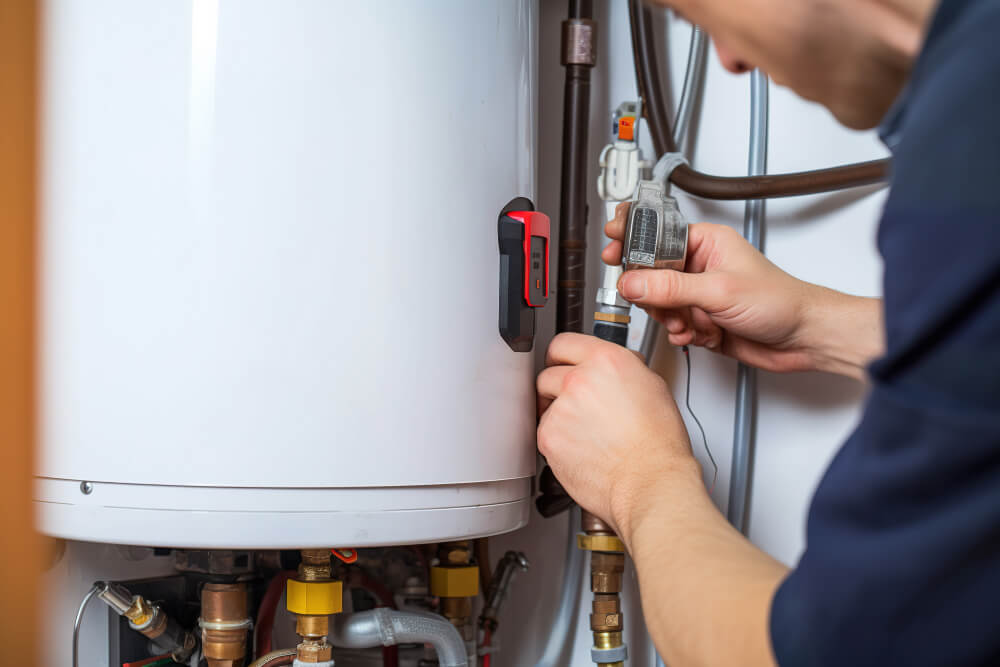Why Winterizing Your Plumbing System is Important
Winterizing your plumbing system is essential to avoid damage and ensure a continuous water supply during the cold months. Here’s why it’s important:
- Preventing Frozen Pipes: When water freezes, it expands, which can cause pipes to burst. Burst pipes can lead to significant water damage and expensive repairs.
- Avoiding Costly Repairs: Taking preventive measures now can save you from costly emergency repairs later. A small investment in winterization can prevent major plumbing disasters.
- Maintaining Water Supply: Frozen pipes can interrupt your water supply, making daily tasks like cooking, cleaning, and bathing difficult or impossible.
Step-by-Step Winterization Process
Insulating PipesWhy It’s Important: Insulating your pipes helps to keep the water inside them from freezing, especially in unheated areas of your home.
Materials Needed:- Foam pipe insulation
- Fiberglass pipe wrap
- Pipe insulation tape
- Identify Vulnerable Pipes: Focus on pipes located in unheated areas such as basements, attics, garages, and crawl spaces.
- Measure and Cut Insulation: Measure the length of the pipes and cut the insulation material to fit.
- Wrap the Pipes: Securely wrap the insulation around the pipes. Use pipe insulation tape to secure the insulation in place.
Why It’s Important: Water left in outdoor pipes and hoses can freeze and cause the pipes to burst.
Materials Needed:- Wrench
- Hose bib covers
- Disconnect Hoses: Remove and store garden hoses to prevent them from freezing and cracking.
- Shut Off the Valve: Locate the shutoff valve for outdoor faucets and turn it off.
- Drain the Faucets: Open the outdoor faucets to drain any remaining water. Leave them open to allow any remaining water to expand without causing damage.
- Install Hose Bib Covers: Place insulated hose bib covers over outdoor faucets to provide additional protection against freezing.
Join HICP Homeowner’s Alliance
Connect with experts, get special discounts and enjoy member benefits
- Set Thermostat: Keep your home’s thermostat set to at least 55°F (13°C), even if you’re away on vacation.
- Open Cabinet Doors: Open cabinet doors under sinks to allow warm air to circulate around the pipes.
- Use Space Heaters: In extremely cold areas of your home, use space heaters to maintain a safe temperature.
Why It’s Important: Sealing gaps and cracks helps prevent cold air from entering your home and keeps warm air inside, reducing the risk of frozen pipes.
Materials Needed:- Caulk
- Weatherstripping
- Inspect Your Home: Look for gaps and cracks around windows, doors, and where pipes enter your home.
- Apply Caulk: Use caulk to seal any gaps or cracks around windows, doors, and pipes.
- Install Weatherstripping: Apply weatherstripping around doors and windows to prevent drafts.
Why It’s Important: A properly functioning water heater is crucial during the winter months to ensure a steady supply of hot water.
Materials Needed:- Water heater blanket
- Pipe insulation
- Set the Thermostat: Ensure the water heater thermostat is set to 120°F (49°C) to prevent overheating and reduce energy costs.
- Insulate the Tank: Wrap the water heater tank with a water heater blanket to retain heat.
- Insulate the Pipes: Insulate the hot water pipes leaving the water heater to prevent heat loss.
- Keep Faucets Dripping: During extreme cold, let faucets drip slightly to keep water moving and prevent freezing.
- Heat Tape: Use heat tape or heat cables on particularly vulnerable pipes. Follow the manufacturer’s instructions for safe installation and use.
Emergency Measures for Frozen Pipes
Despite your best efforts, pipes may still freeze. Here’s what to do if you suspect a pipe has frozen:
Identifying Frozen Pipes Signs of Frozen Pipes:- Frost on the exterior of the pipes
- Unusual smells coming from drains
- Little to no water flow from faucets
- Hairdryer
- Heating pad
- Warm towels
- Turn Off the Water Supply: Shut off the main water supply to prevent water from flooding your home if the pipe bursts.
- Open Faucets: Open the faucet nearest to the frozen pipe to allow water to flow once it begins to thaw.
- Apply Heat: Use a hairdryer, heating pad, or warm towels to gently heat the frozen section of the pipe. Start near the faucet and work your way toward the frozen area. Avoid using open flames or high heat sources that can damage the pipes.
- Check for Leaks: Once the pipe has thawed, check for any leaks or cracks. If you find any, call a professional plumber immediately.
Preventing Future Plumbing Emergencies
Regular Inspections and Maintenance: Routine inspections and maintenance can help you identify and address potential problems before they become emergencies.
How to Perform Regular Inspections:- Professional Inspections: Schedule annual inspections with a licensed plumber to check for signs of wear and tear.
- DIY Checks: Regularly inspect exposed pipes, fixtures, and appliances for signs of leaks, corrosion, or damage.
Using Smart Technology: Smart technology can help you monitor your plumbing system and detect issues early.
Smart Devices to Consider:- Water Leak Detectors: Place detectors near water heaters, under sinks, and in basements to monitor for leaks.
- Smart Thermostats: Use smart thermostats to maintain consistent indoor temperatures and prevent pipes from freezing.
Winterizing your home’s plumbing system is a crucial step in preventing costly repairs and ensuring a steady supply of water during the cold months. By following the steps outlined in this guide, you can protect your pipes from freezing, reduce the risk of water damage, and enjoy peace of mind throughout the winter season. Remember, taking preventive measures now can save you from the hassle and expense of dealing with plumbing emergencies later. Stay warm and safe by winterizing your plumbing system before the first freeze hits.








